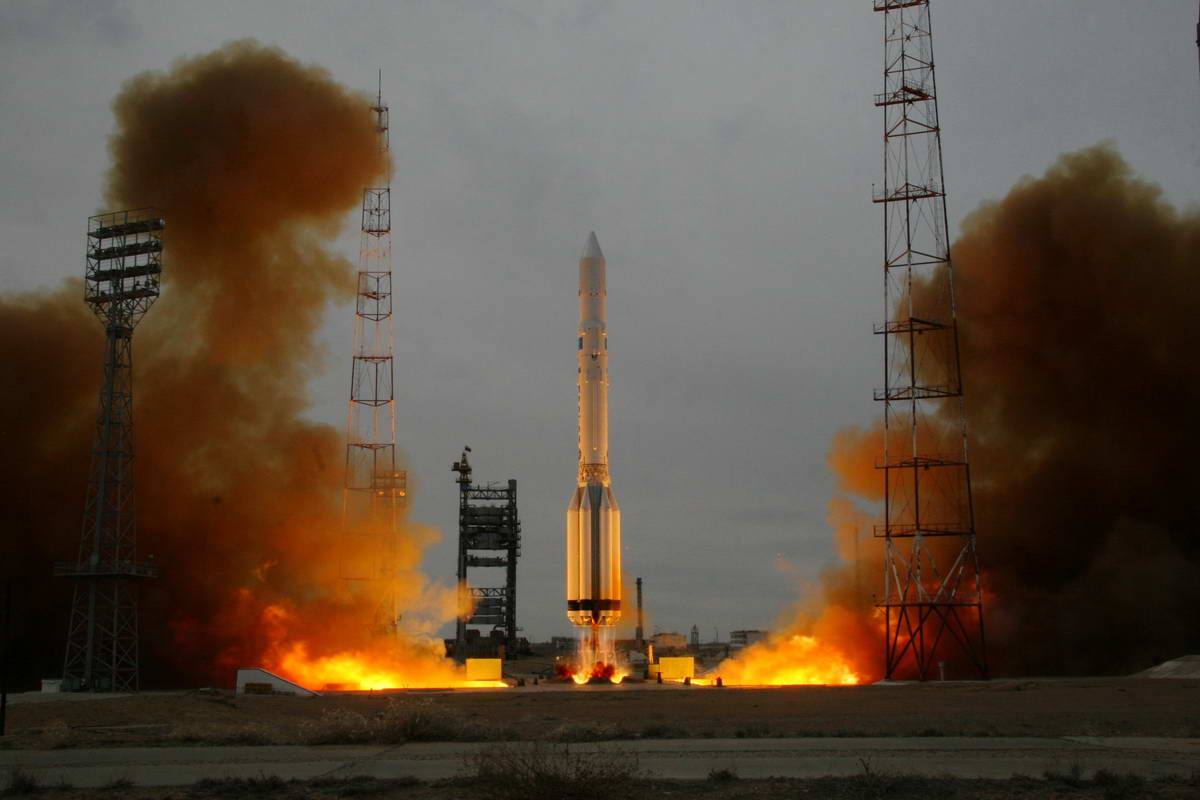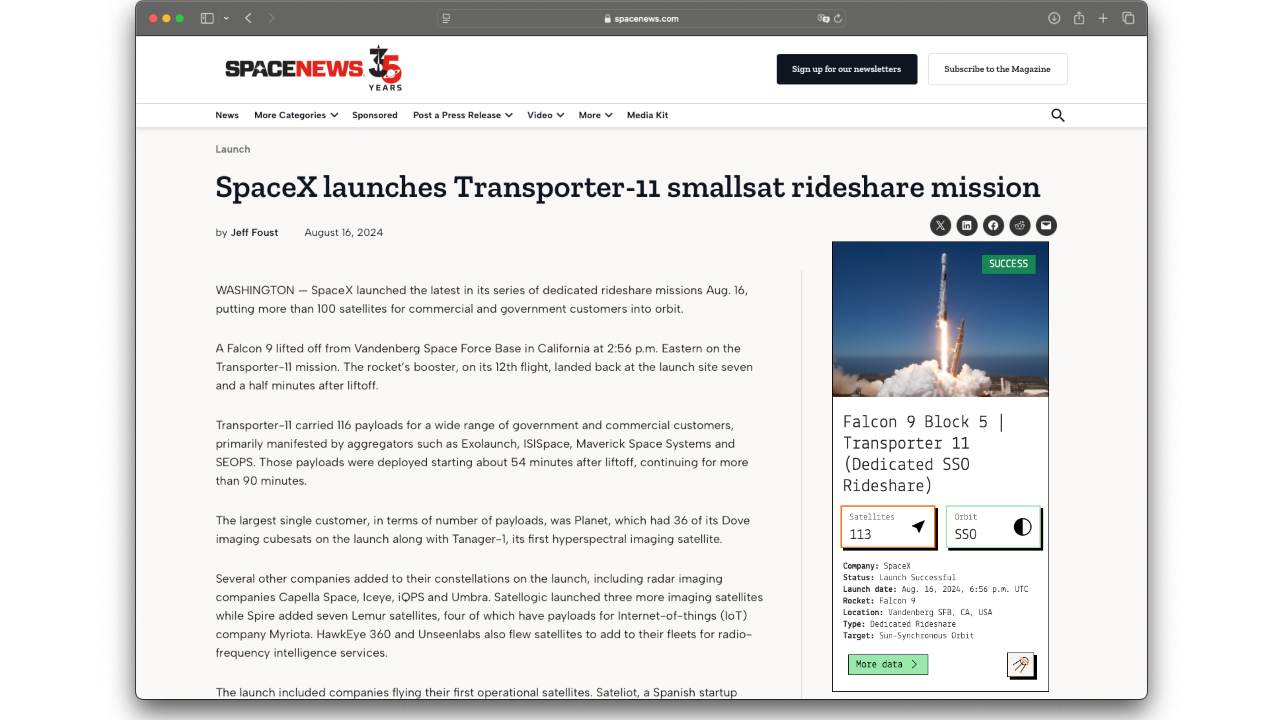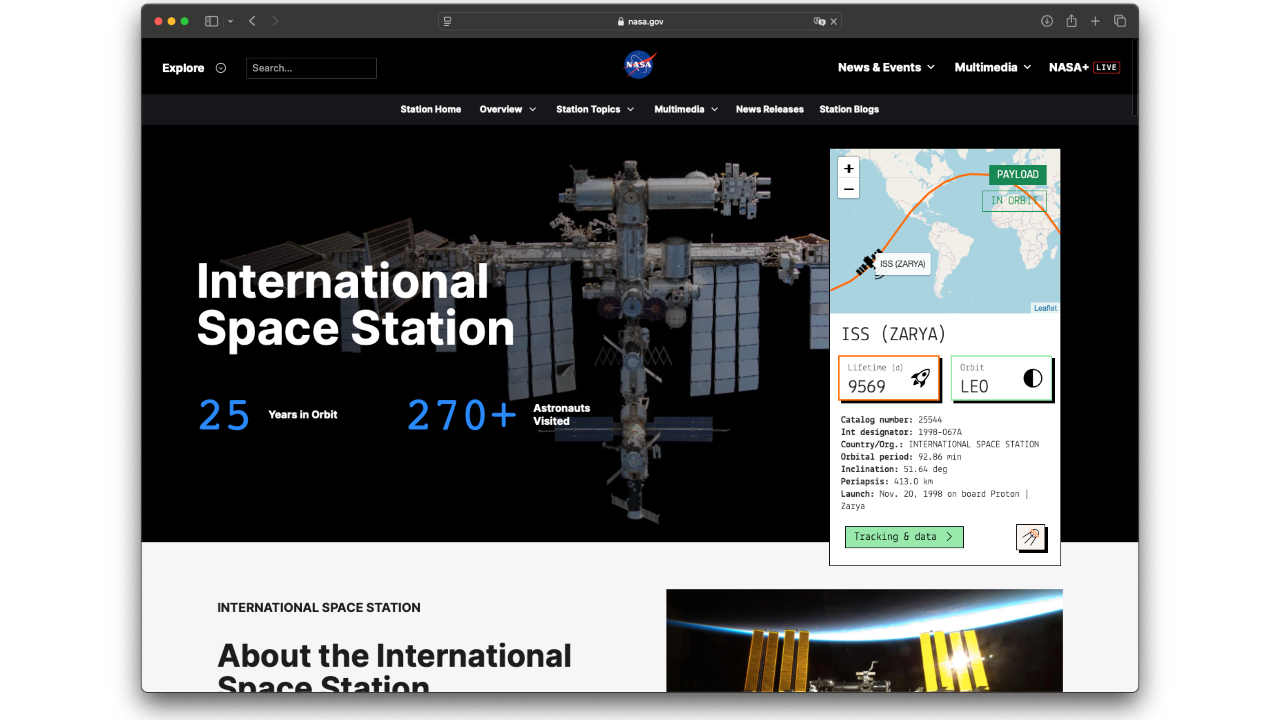Key statistics
Satellite IRIDIUM 68 at a glance.
Uptime
7365
Days in orbit
Revolutions
N/A
Per day
Orbit
LEO
Low Earth Orbit
Inclination
N/A
Latest
Satellite identification and parameters
Extended collection of information and parameters for IRIDIUM 68.
Object identification
Object name: IRIDIUM 68
International designator: 1998-021G
Object number (NORAD): 25291
Object ID (CCSDS): 25291
Country: UNITED STATES OF AMERICA (US)
Current information (Y/N): Y
RCS size: LARGE
Orbital parameters
Decay date: June 6, 2018
Inclination: 86.34 deg
Period: 87.79 minutes
Apoapsis: 201.0 km
Periapsis: 129.0 km
Two-line elements (TLE)
No TLE available, as this satellite has decayed and is no longer in orbit.
Live tracking on map
Satellite IRIDIUM 68 has decayed and is no longer in orbit. No tracking available.
In-orbit conjunctions
Satellite IRIDIUM 68 has decayed and is no longer in orbit. No conjunctions available.
Associated space launch
Iridium provides global mobile telecommunications services using a constellation of 66 low earth orbit satellites in a 86.4° inclined orbit. Although 77 satellites were originally envisioned for the system and spawned the name based on the 77th element in the periodic table, the system has been scaled back. Motorola's Satellite Communications Group designed and manufactured the Iridium satellites with Lockheed Martin providing the LM-700A spacecraft buses.
IRIDIUM 68 was lifted into orbit during the mission ‘Proton-K/17S40 | Iridium 62 to 68’, on board a Proton-K/17S40 space rocket.
The launch took place on April 7, 1998, 2:13 a.m. from 81/23 (81L).
For more information about the launch, click the button.

Proton-K/17S40 | Iridium 62 to 68
Agency: N/A
Status: Launch Successful
Launch date: April 7, 1998, 2:13 a.m. UTC
Rocket: Proton-K/17S40
Launch pad: 81/23 (81L)
Location: Baikonur Cosmodrome, Republic of Kazakhstan
...
Latest news about this satellite
There are no fresh news available about this satellite. Check back as we update our databases every day.
Newsletter sign-up
Weekly statistics, charts and insights to help you stay on top of the space industry.




